Even trivial knowledge is power.
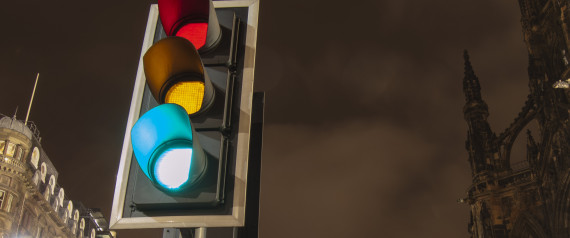
The three-color scheme is based on lights used by the railway industry in the early 19th century. Red was used for stop, green for caution and white for go. But the red filter was known to fall off, leaving two white lights (and crashing trains). So green filters replaced the white light to signal go, and yellow was introduced for caution.
John Peake Knight is credited with the contemporary traffic light system, installed in London for a brief time in 1868. But the lights were only used at night with policemen directing traffic during the day (as it was thought that nobody would obey rules given by machines). After about a month, a gas leak caused a traffic light to explode, severely burning a cop on duty. So the system was dropped until 1920, when William L. Potts invented the red, yellow and green light we know today. It was used along with regional-specific signals until 1935, when the Federal Highway Administration required all lights to follow this standard.
Bonus: One New York town has an upside-down traffic light with red on the bottom and green on top.
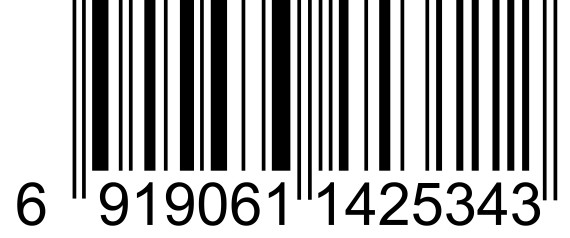
Those lines and numbers you find on just about every product are called UPC (Universal Product Code) bar codes, which were introduced in the 1970s to speed up the checkout process for groceries. The first six digits serve as identification for the manufacturer, the next five digits are the item number and the last digit is a "check digit" that lets scanners know if they read the code correctly.
Each of the 12 digits corresponds to the lines and spaces above them, each with a specific width measured in values of one to four. For example, the pattern for the digit "0" is "3-2-1-1," and if it's starting a barcode then the 3 and 1 refer to space sizes and the 2 and 1 refer to line sizes. Luckily, we have scanners to do the reading for us quickly.
Some "famous" manufacturer IDs are Coke's 049000 and Quaker Oats' 030000. There are also patterns for certain products -- weighted items like fruit start with a "2," pharmaceutical products start with the number "3" and coupons start with a "5."
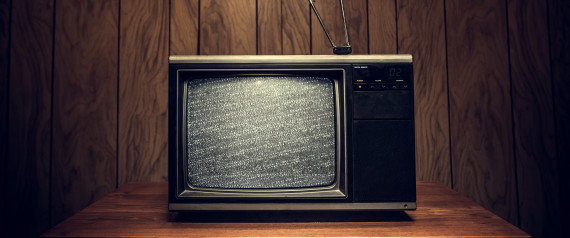
This static has mostly disappeared with the rise of cable and digital television (except for HBO subscribers); but when signals were captured with antennas, static was a regular sight. Television antennae would always be picking up some sort of signal (such as atmospheric noise), and when the airwaves for a supposed channel couldn't drown out the natural static in the air, the antenna would still broadcast a signal onto the screen. Televisions were then designed to produce random sequences of black and white dots to coincide with the strength of the static signal.
It has been theorized that this static was partly caused by the Big Bang.
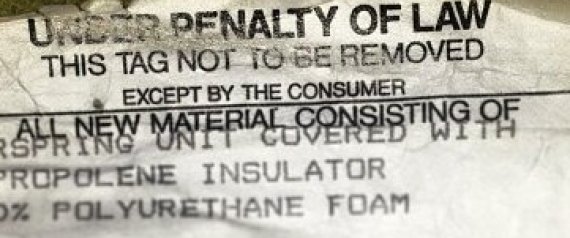
It's not illegal for consumers to rip off these tags, but is illegal for the manufacturers to do so. But why all the confusion?
Before these tags were added to mattresses and became fodder for late night talk show jokes, corrupt manufacturers in the early 20th century would stuff their beds with whatever they could cheaply obtain. This included items that had a high risk of molding, such as newspapers, old rags and even food waste. To combat this problem, the United States government made it illegal to produce a mattress without a tag explicitly stating what was used as stuffing. Unfortunately, sketchy sellers simply ripped these tags off before selling mattresses filled with unsavory materials and so tags were then infamously required to also state that it was illegal to remove them. These tags obviously caused confusion, so more recent ones say that consumers are in fact allowed to get rid of the tag if they so please.
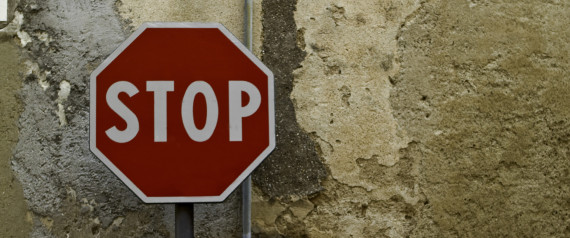
Detroit installed the first stop sign in 1915, but this first version was actually a square with black lettering over a white background. From then on, stop signs in all shapes and sizes proliferated until 1923, when the Mississippi Valley Association of State Highway Departments created a set of standards for all road signs. The association thought that the greater number of sides a sign had, the more urgent drivers would think the information was, and therefore chose the eight sides of an octagon for the stop sign.
Colors for various signs were still all over the place until 1935, when a 166-page document called the "Manual on Uniform Traffic Control Devices" was created by traffic engineers and widely adopted. In this first manual however, it was suggested that the stop sign be yellow with black lettering. It wasn't until a revision in 1954 that the manual suggested stop signs should be red with white lettering.
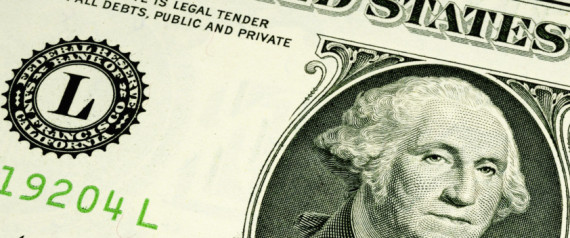
That giant letter to the presidents' left corresponds to the Federal Reserve Bank that issued the bill. There are twelve locations of the Federal Reserve Bank and these are the letters that correspond to each location:
A: BostonB: New YorkC: PhiladelphiaD: ClevelandE: RichmondF: AtlantaG: ChicagoH: St. LouisI: MinneapolisJ: Kansas CityK: DallasL: San Francisco
Although it may seem more obvious to use "B" to represent Boston or "C" for Chicago, the letters actually correspond with which "district" the banks control, with Boston being the first district, New York being the second and so on.
Bonus: That eye and pyramid symbol on dollar bills is actually one side of the "Great Seal of the United States" and has been featured on the back of the dollar bill since 1935, along with the bald eagle side of the seal.
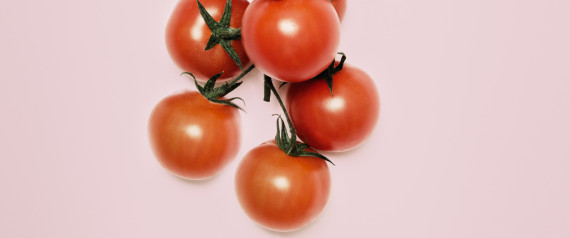
There's so much confusion about how to define tomatoes because what determines a fruit and a vegetable depends on whom you ask. It's essentially an argument between gardeners and chefs.
Botanically, a fruit is more or less considered a fruit because of its seeds. As Merriam-Webster points out, "in its strict botanical sense, [a fruit is] the fleshy or dry ripened ovary (enlarged portion of the pistil) of a flowering plant, enclosing the seed or seeds. Apricots, bananas, and grapes, as well as bean pods, corn grains, tomatoes, cucumbers, and (in their shells) acorns and almonds, are all technically fruits." However, in the culinary world, plants that are more savory than sweet have been traditionally considered vegetables, meaning eggplants and tomatoes get included in the vegetable category. The argument was actually settled by the U.S. Supreme Court case of Nix v. Hedden, which determined in 1893 that the tomato could be taxed as a vegetable (and therefore is a vegetable), as the culinary and more popular definition is what truly mattered. Sorry, botanists.

According to legend, the different sides for male and female buttons come from a time when men dressed themselves, while women were dressed by servants. Since most people were right-handed and it was deemed easier to use a button if the opening faced your dominant hand, clothiers designed the buttons so men could easily button themselves up, while the servants could easily button up women.
There are other legends that seem a little less likely. One states that men needed to easily warm their right hand for sword fights, so the button placement was chosen so they could slip their hand through the fabric. Another states that women used to mostly breastfeed on their left sides.


